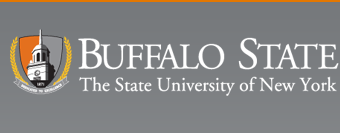Department Chair
Michael E. Parks, Ed.D
Date of Award
5-2014
Access Control
Open Access
Degree Name
Art Education (K-12), M.S.Ed.
Department
Art Education Department
Advisor
Alice C. Pennisi, Ed.D
Department Home page
http://arteducation.buffalostate.edu/
First Reader
Alice C. Pennisi Ed.D
Second Reader
Candace Masters, M.F.A.
Third Reader
Kryssi Staikidis, Ed.D.
Abstract
Presently, there is confusion about the definition, role, and pedagogy of artist-teachers and how their practice influences the way art is taught in a K-8 public school setting. In this paper, I present my motivations for pursuing this topic of research, provide a brief history of Western conceptions of artist-teacher, and describe pedagogical characteristics of artist-teachers along with an examination of the teaching environments they create.
I used Arts-based research to conduct a multi-site case study in which I first investigated my artist practice and then studied how I translated what I learned into the elementary art classroom. I completed my study in two phases. In Phase 1, I studied the cognitive processes that emerged as an organizing structure for my artist practice. Then, I embedded these cognitive processes to structure a curriculum unit, which I taught to 5th and 6th grade students in Phase 2. In both sites, I collected data through observation, dialogue recordings, and document analysis to investigate what happens when an art teacher like me grounds their teaching practice with their artist practice.
My findings illustrate that approaching teaching with artist-teacher philosophy redefines art making as a cognitive process and expands conceptions of developing craft through postmodern art practice. Additionally, in this approach, artist-teachers translate artist practice through conversational pedagogy and teaching is a reflective approach. Recommendations for future research are provided, including recommendation for research about how artist teacher philosophy influences arts-based research and artist practice in teacher training programs, and recommendations for how artist teacher philosophy affects leadership in the broader school community
Recommended Citation
Smith, Ashley, "Artist Practice in the Elementary Classroom: Redefining Art Teaching Through Artist-Teacher Philosophy" (2014). Art Education Theses. 2.
https://digitalcommons.buffalostate.edu/arteducation_theses/2


